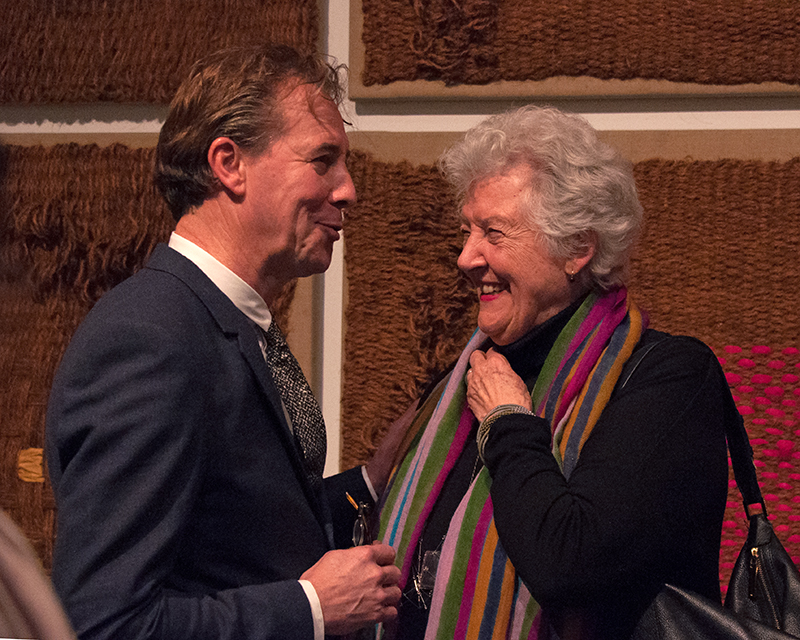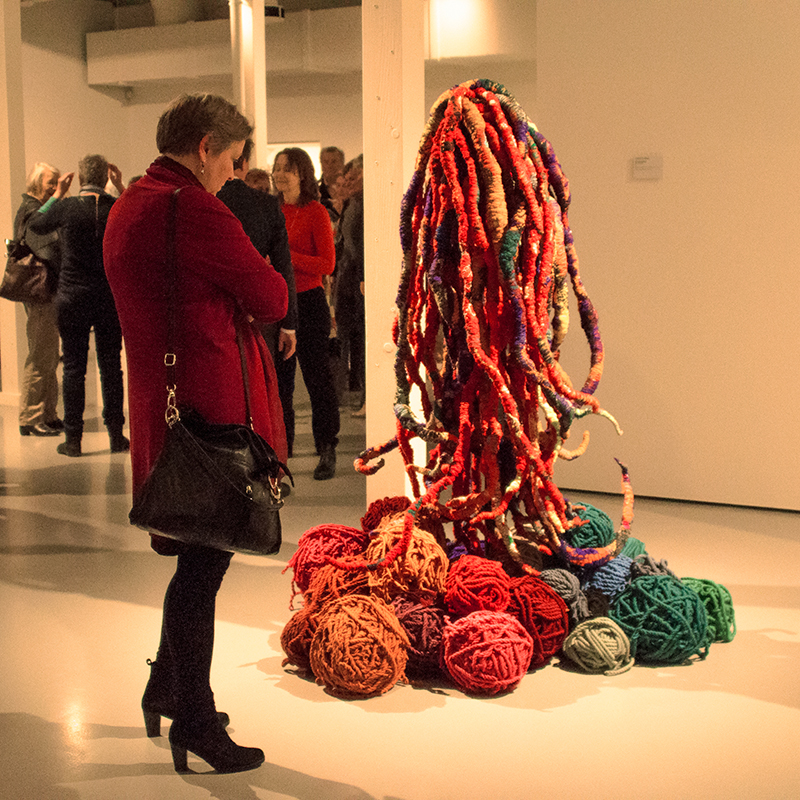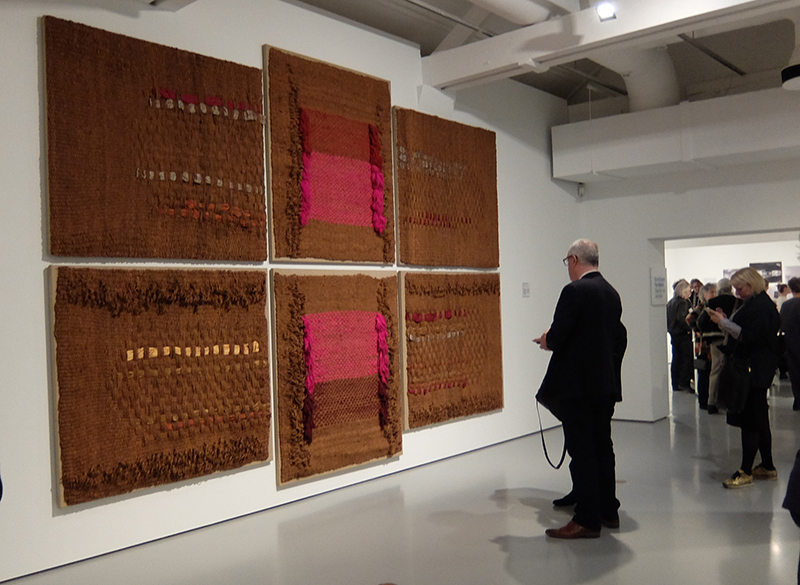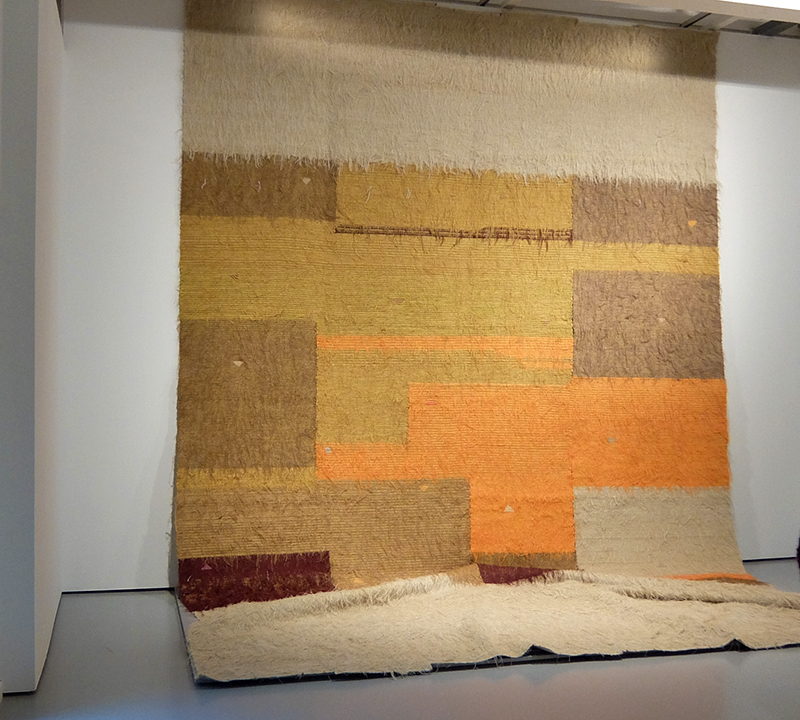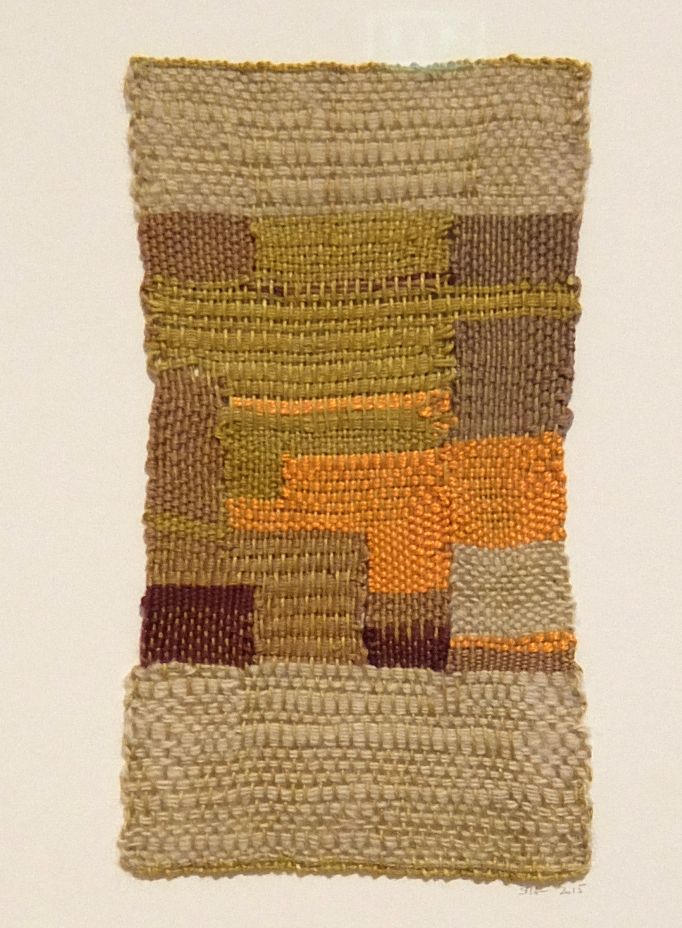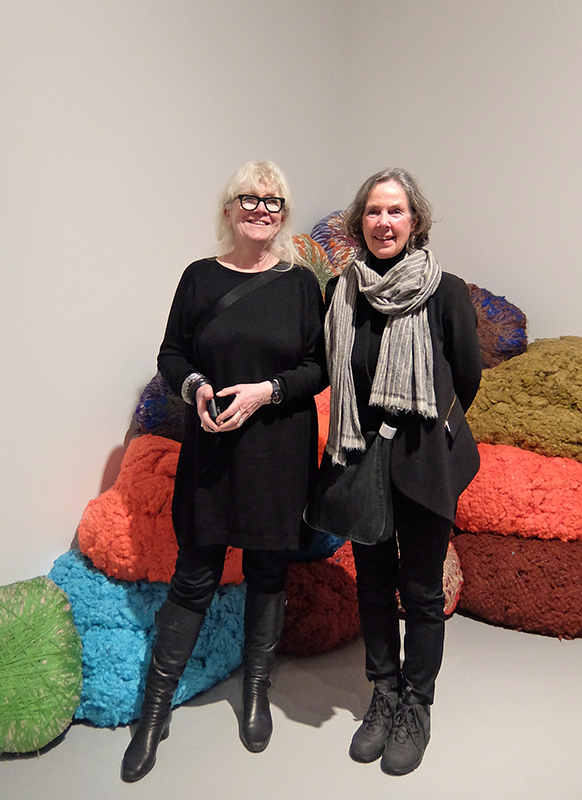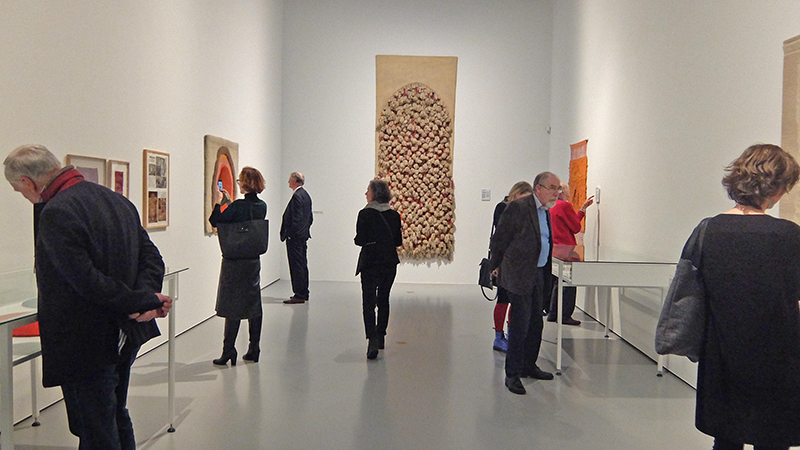
Internationally renowned, thanks to her participation in numerous large solo and group exhibitions, this is her first appearance in the Netherlands for many years. Her colourful work, which ranges from monumental textile installations to metre-high sculptures and enchanting miniatures, has been making waves since the late 1950s. A varied selection of this free work is on display, along with examples of her textile designs – both for hand woven and industrial production. Attention is also paid to the artist’s special and long term privileged relationship with the Netherlands. Photos, films, sketches, drawings and personal documents illustrate her peripatetic and productive life. Sheila Hicks | Why Not? includes work spanning seven decades loaned by both national and international museums. New works have been created especially for the TextielMuseum.
Hicks has been fascinated by art and textiles since she was a child. In the 1950s, she trained as a painter with former Bauhaus teacher Josef Albers. She was introduced to Pre-Colombian weaving by renowned art historian George Kubler at Yale in 1956. After completing her thesis on the topic, she was awarded a scholarship to paint in Chile. During the period she spent in South America, she developed a particular interest in textiles. This interest took her all over the world, from Mexico and South Africa to Morocco and India. Wherever she went, she collaborated and exchanged knowledge with local artisans, artists and fabricators. Her colourful installations are admired worldwide and she continues to create large-scale textile projects in her studio in Paris. Her works can be found in the collections of prestigious museums, including the Metropolitan Museum of Art, the Museum of Modern Art in New York and the Tate Modern in London. Institutions that have loaned works for the exhibition include the Centre Pompidou in Paris, Philadelphia Museum of Art, the Museum für Gestaltung in Zürich and the Stedelijk Museum in Amsterdam.Hicks has been fascinated by art and textiles since she was a child. In the 1950s, she trained as a painter with former Bauhaus teacher Josef Albers. She was introduced to Pre-Colombian weaving by renowned art historian George Kubler at Yale in 1956. After completing her thesis on the topic, she was awarded a scholarship to paint in Chile. During the period she spent in South America, she developed a particular interest in textiles. This interest took her all over the world, from Mexico and South Africa to Morocco and India. Wherever she went, she collaborated and exchanged knowledge with local artisans, artists and fabricators. Her colourful installations are admired worldwide and she continues to create large-scale textile projects in her studio in Paris. Her works can be found in the collections of prestigious museums, including the Metropolitan Museum of Art, the Museum of Modern Art in New York and the Tate Modern in London. Institutions that have loaned works for the exhibition include the Centre Pompidou in Paris, the Philadelphia Museum of Art, the Museum für Gestaltung in Zürich and the Stedelijk Museum in Amsterdam
(press text)
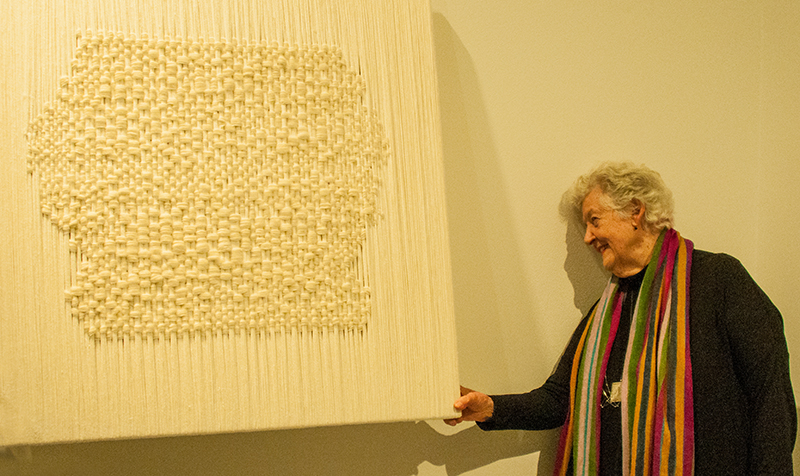
Once Sheila Hicks, together with Magdalena Abakanowicz and Jagoda Buic, was one of the three Queens of the Lausanne Biennale. Last Friday at the opening of her exhibition at the Dutch Textile Museum in Tilburg she was the Empress of Textile Art. She herself does not like this notion : „In art all barriers are down, why than the notion of textile art. It does not exist for glass or wood either“ . She comments the current lack of good textile education at the universities and academies, or the missing platform for textile artists of today, working with digital means or with new materials & techniques: „It does not matter at all because those who want to learn can get everything from the internet!“… „ I am an autodidact and have learned everything by myself.“.. „Just start making and if it is good it will find recognition“ , so her advice to young people. This is the attitude of someone who made her way. Apart from her natural talent her teacher, Josef Albers, may have been helpful for her career. A start that not everybody can have. It is also a bit of a disappointment to me that even iconic Sheila Hicks does not acknowledge that textile is more that just a material like stone or glass.
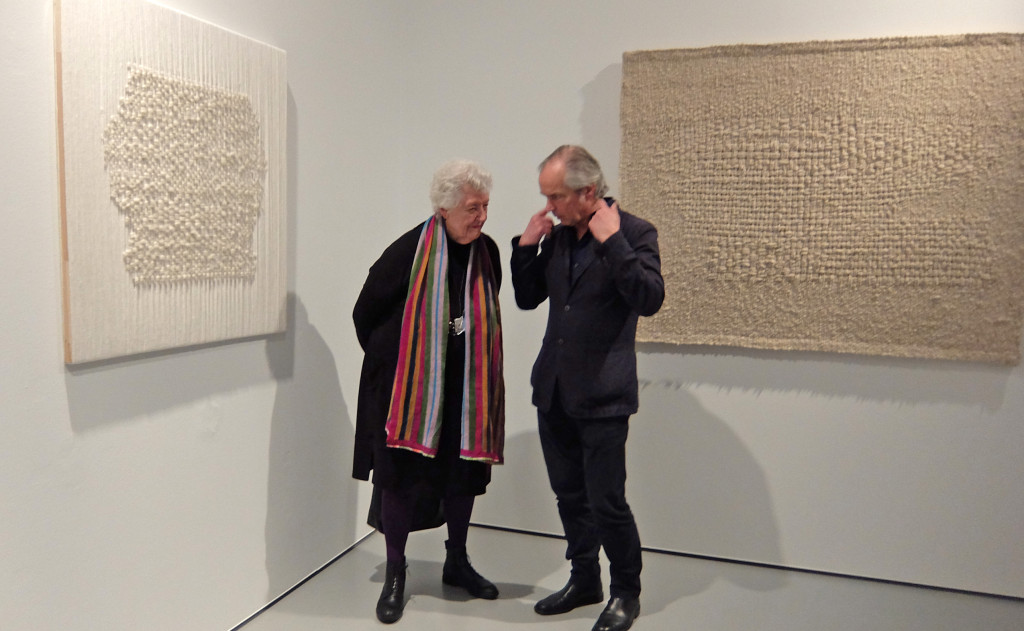
Her exhibition had gathered everyone who is anyone in the Dutch textile world, making the beautiful halls of the Tilburg TextielMuseum look like an old students´ gathering. From as far as Norway artists have made it to the opening! The three halls of the exhibition are nearly not large enough to show the diversity of works in the exhibition. With great pleasure I saw the small woven works of which Sheila Hicks wrote: „ I found my voice and my footing in my small work. It enabled me to build bridges between art, design , architecture, and decorative arts“ (2004, Weaving as a Metaphor, page 17). To my knowledge she was also the first to play with weave structures, variations made white-in-white in tabby weave. These works are simply superb and it is indeed possible that childlike playfulness such as hers may not have come easily to a classically trained textile artist!
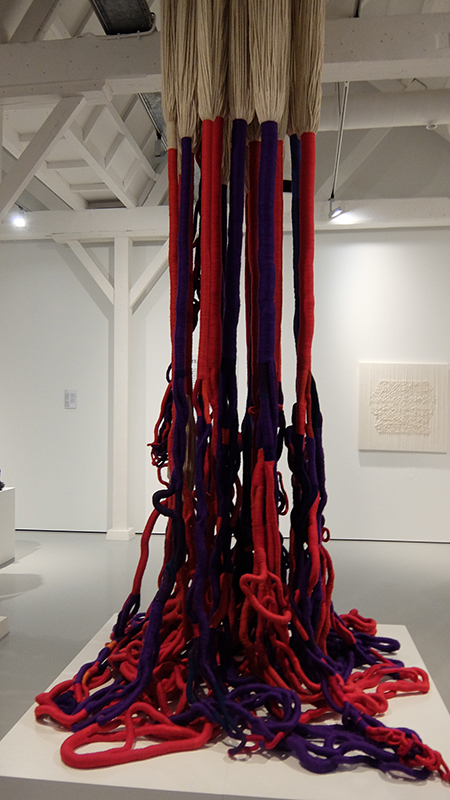
There were some few large three-dimensional works in the exhibition that made a good impression; the presence and colour vitality was outstanding. In reality they looked even more convincing than as catalogue illustrations! Also the new large tapestry „Sunny Meadow Swept by the Wind“, executed 2014 at the Manufacture Nationale des Gobelins in Paris, was a positive surprise: A work totally executed by others in the most conventional way is showing lightness and colour vibration.
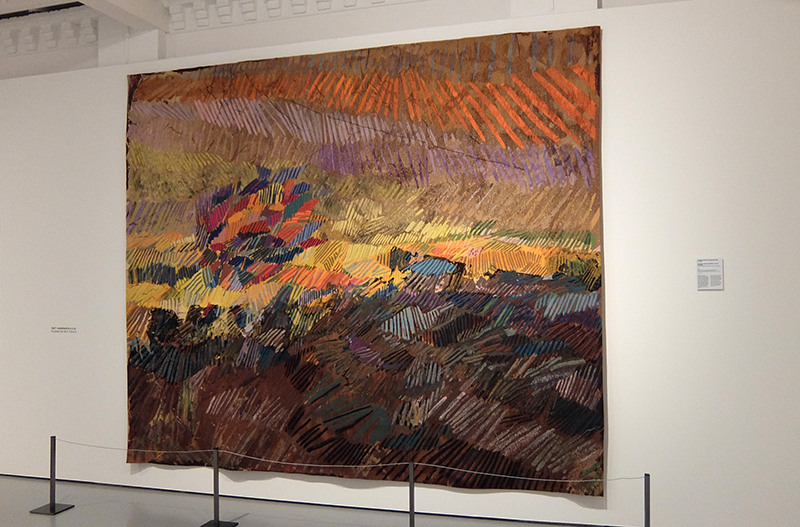
In contrast hereto two further large works were a bit disappointing: The „Concert Chromatique , 2015, textile balls made of synthetic fibers by the company Sunbrella, Glen Raven, North Carolina, ready to be used to sit on. I saw this work earlier in articles and was wondering about so much pleasing decorativeness. Would this work be admired in the same way if it was made by any other textile artist?
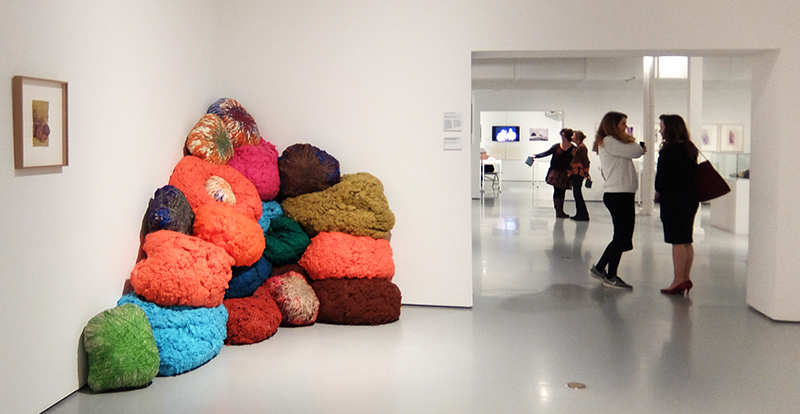
Also the much-praised translation of a small weaving into large format by Sheila Hicks, done in a workshop in Guatemala, was not convincing. This was probably also due to the size of the hall that was not high enough.
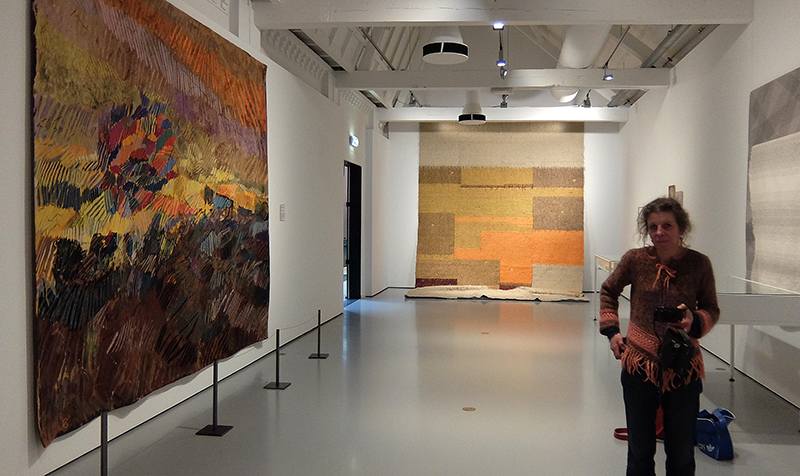
Meanwhile Sheila Hicks was talking to a group of young students – clearly very pleased to be in their company – answering questions. I guess that she must be a fabulous teacher! In this enchanting small group she looked some twenty years younger than her physical age (over 80), radiating energy and enthusiasm. The museum staff told me that, working for the exhibition, everybody was at the end of his/her forces except for Sheila,who stayed vital and active, beating all the younger ones!
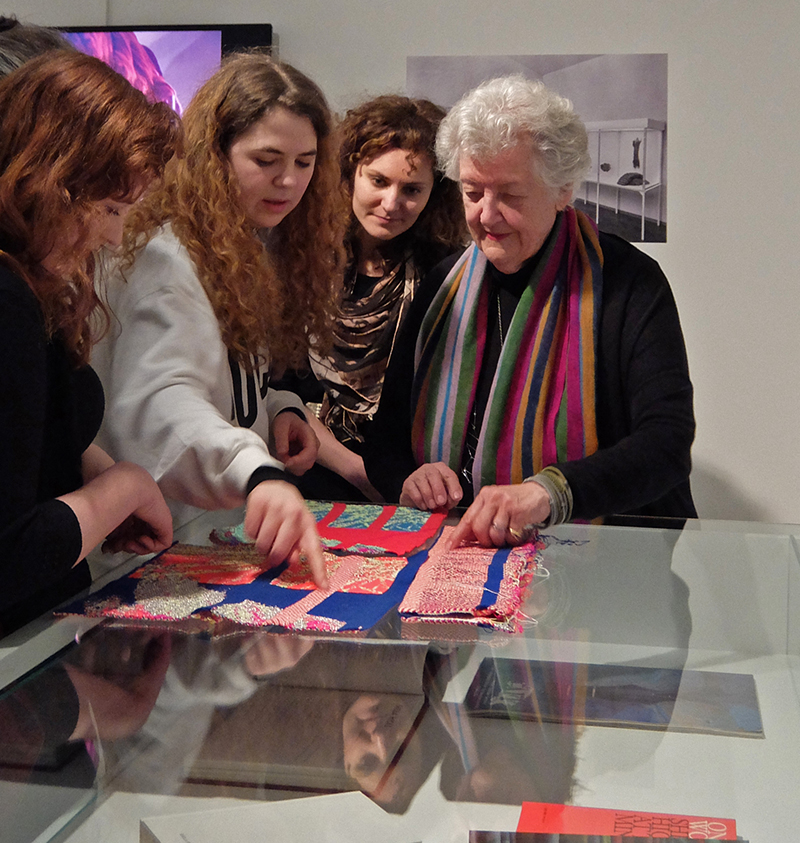
The exhibition as a whole made a very positive impression on all the visitors I could speak to. It is worth a trip from far and everyone who can should go and see it! The exhibition will be on view till 5 June 2016 and is accompanied by an extensive program of activities. The TextielMuseum has done a great job, proving once again that this museum is one of the most important textile museums in Europe!
Further exhibitions by Sheila Hicks can be found on her website http://www.sheilahicks.com/exhibitions–events.html:
5 JUNE- 4 SEPTEMBER Sheila Hicks : Material Voices at Joslyn Art Museum Omaha, Nebraska http://www.joslyn.org/collections-and-exhibitions/temporary-exhibitions/upcoming/
5 MARCH – 8 MAY (group show) Le Fresnoy, Tourcoing, France
http://www.lefresnoy.net/en/expo/droles-de-trames
4 MARCH – 5 JUNE Solo Show Textile Museum, Tilburg, Holland
http://www.textielmuseum.nl/nl/tentoonstelling/sheila-hicks
8-25 APRIL 2016 Glasgow International 2016, Scotland
http://glasgowinternational.org/artists/sheila-hicks/
18 MARCH – 5 JUNE 2016 20th Biennale of Sydney, Australia
https://www.biennaleofsydney.com.au/20bos/artists/hicks-sheila/
